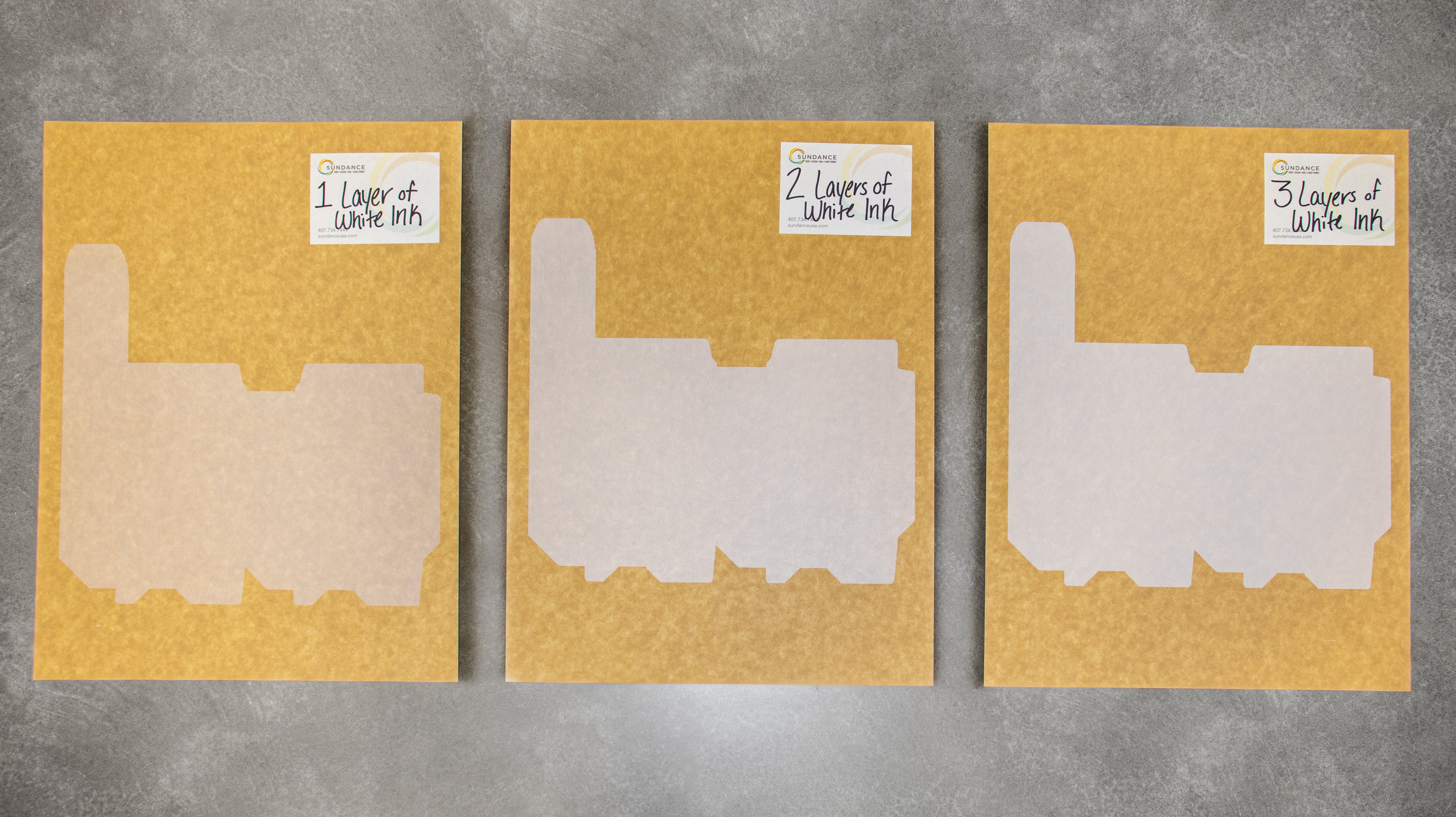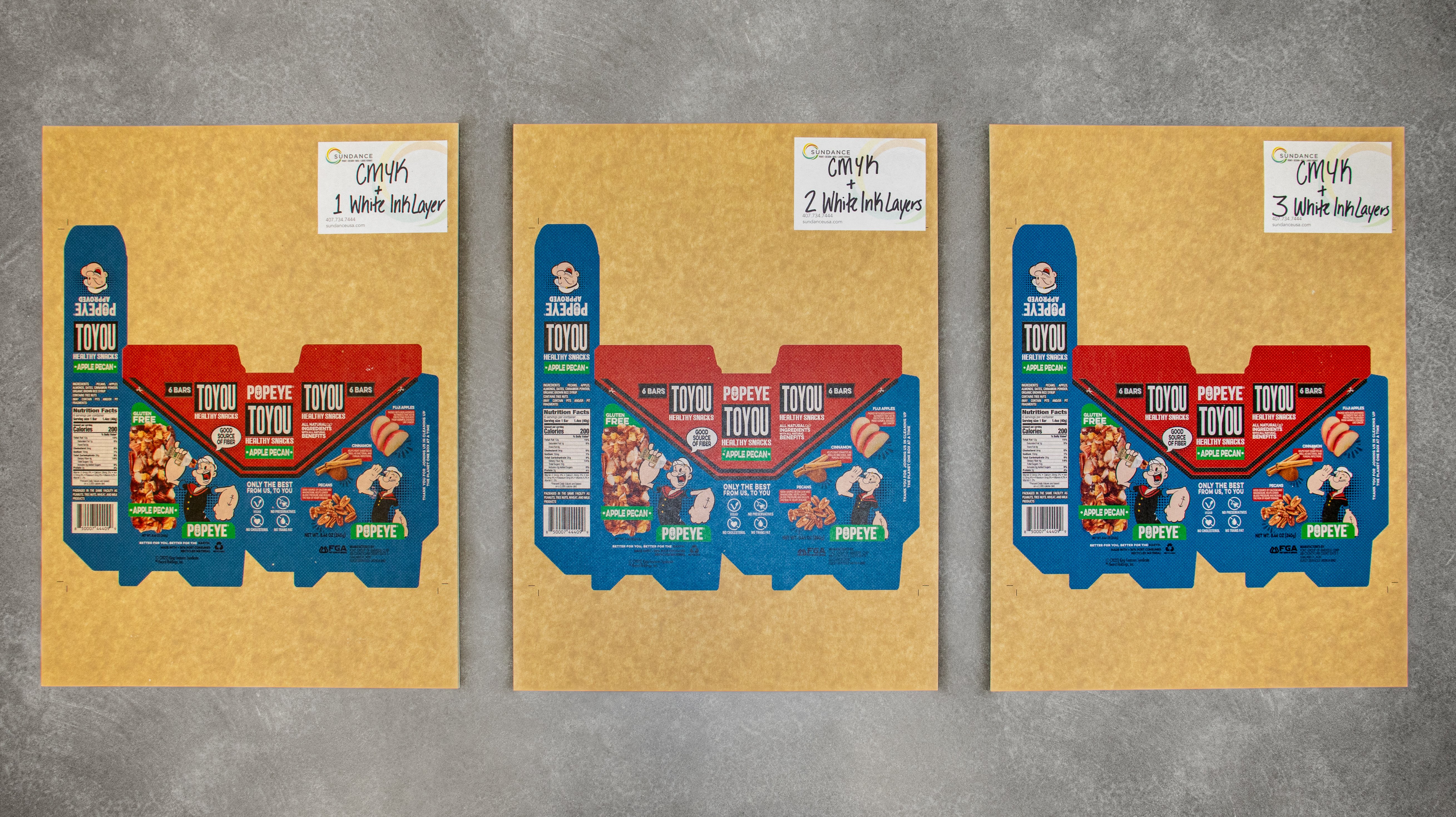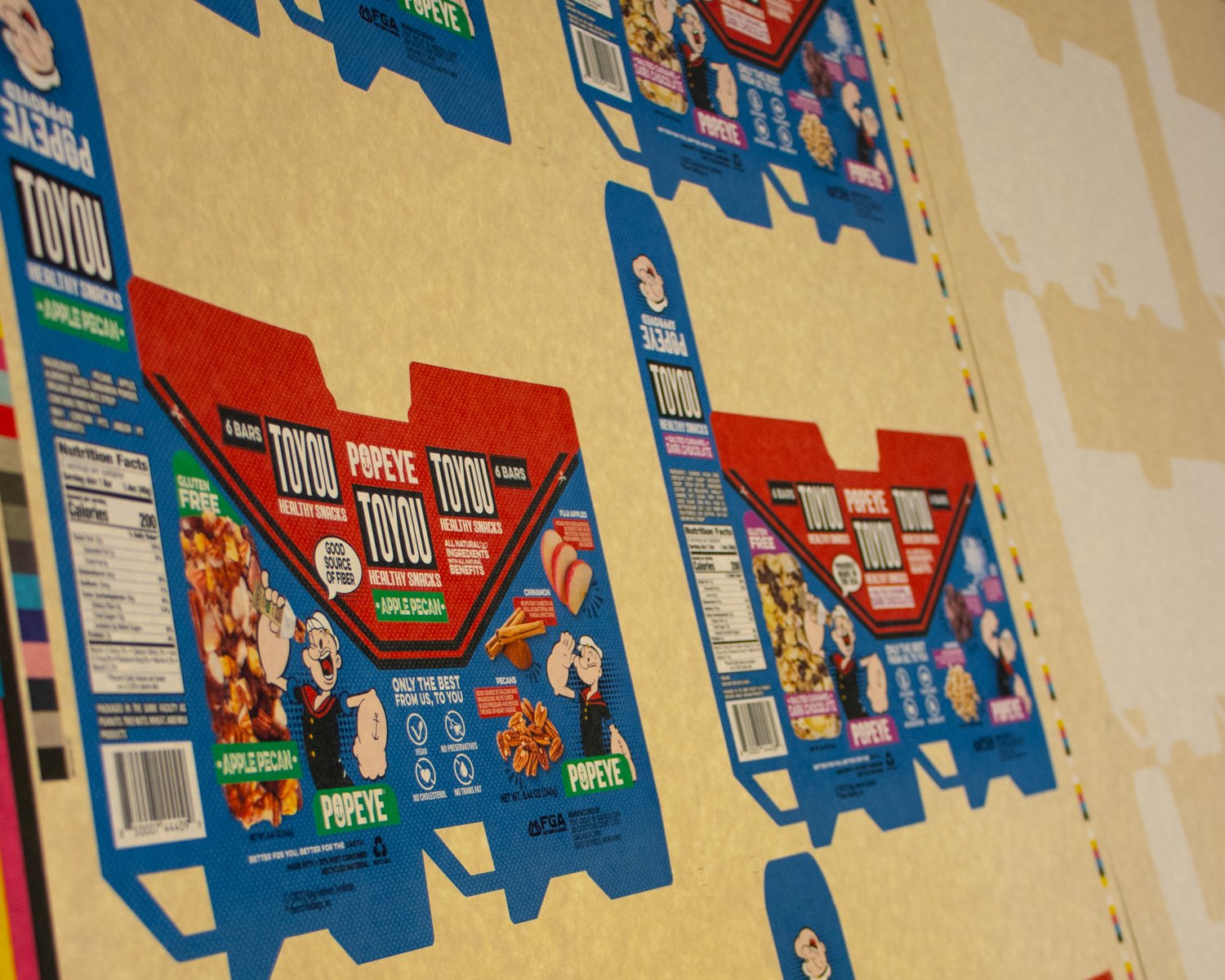When it comes to commercial printing and packaging, there are many decisions to make, including the choice of ink. While most people are familiar with the four-color process of cyan, magenta, yellow, and black (CMYK), white ink is also an option. But how do you know when to use white ink instead of sticking to the four-color process?
Exploring the below advantages and disadvantages, step-by-step guide, and FAQs on using white ink in general commercial printing and packaging will help you to determine the best cases to use white ink in your project.
Advantages and Disadvantages of Using White Ink ➕ ➖
White ink is an excellent option for designs requiring a bright, opaque base or when printing on darker materials. It is also a good choice when creating designs that require a layered effect or printing on transparent materials. However, it may not be necessary for all designs and can add additional cost, so it's important to consider the pros and cons before deciding whether to use white ink.
➕ Advantages of Using White Ink
- Increased Color Vibrancy: White ink can help increase the vibrancy of the other colors in the print by providing a bright, opaque base. This is especially useful when printing on colored paper or packaging materials.
- Improved Readability: Printing white ink on darker materials can improve the readability of the text or design. When it comes to packaging, readability plays a crucial role as consumers need to be able to identify important details like ingredients and instructions quickly.
- More Design Options: White ink allows for more creative design options, such as printing on transparent materials or creating a layered effect with multiple colors.
- Increased Durability: White ink can also improve the durability of the printed material by providing an additional layer of protection.
➖ Disadvantages of Using White Ink
- Additional Cost: Using white ink can be more expensive than sticking to the four-color process, as it requires an additional printing plate and ink.
- Limited Applications: White ink is not suitable for all applications, as it may not be visible on lighter substrates or may not provide sufficient contrast in certain designs.
- Potential for Smudging: White ink can be prone to smudging if not adequately dried, which can be problematic for packaging that needs to be handled frequently.
 White ink is applied to the substrate first before CMYK layers. Depending on the substrate, additional white ink layers may be required to achieve the desired look.
White ink is applied to the substrate first before CMYK layers. Depending on the substrate, additional white ink layers may be required to achieve the desired look.
Step-by-Step Guide: How to Use White Ink in Your Commercial Printing and Packaging 📝
Using white ink in your commercial printing and packaging can offer many advantages, including increased color vibrancy, improved readability, and more design options. By following these simple steps, you can achieve great results and create stunning designs that will stand out from the competition.
📝 Step 1: Determine If Your Design Requires White Ink
Before deciding to use white ink, it's important to determine if your design requires it. White ink is best suited for designs requiring a bright, opaque base or printing on darker materials. You may not need a white ink layer if your design does not require these features.
📝 Step 2: Select Your Printing Method
There are several printing methods that can be used to apply white ink, including offset printing and digital printing. Each method has advantages and disadvantages, so choosing the best method for your design and budget is important. Offset printing is best for larger quantity runs, as a setup is required for the various ink wells, including the white ink. Digital printing tends to be better for shorter quantity runs and provides the opportunity for variation in designs being printed (i.e., multiple SKUs, variable data, or personalization).
📝 Step 3: Choose the Right Substrate
Choosing the right substrate is essential when using white ink to ensure the ink adheres properly and looks great. Be sure to pick substrates compatible with white ink. Take into consideration the weight, texture, and color when selecting the substrate for your print project.
📝 Step 4: Prepare Your Artwork
Once you've determined that your design requires white ink and the printing method you will use, it's time to prepare your artwork. Make sure that your design is set up correctly in your design software, including the addition of a separate layer for white ink. Keep in mind that white ink can require a separate printing plate and ink, so it's important to prepare your artwork accordingly. Check with your print provider to determine if your files are formatted correctly for the printing method chosen. At SunDance, our prepress experts are happy to assist with any print or file formatting questions. We also have tutorials for a variety of common print questions.
📝 Step 5: Print and Proof a Test Run
Before running a large printing job, it's always a good idea for the print facility producing your project to print and proof a test run to ensure your design looks how you want it to. They will print a small quantity of your design using a white ink layer and review the results with you. Depending on the results, your print provider may choose to increase or decrease the amount of white ink used in your print run. When you're happy with the printed results, then you're ready to move on to the next step of producing your project.
📝 Step 6: Print Your Design
Once you've completed all of the necessary preparations, it's time to print your design using white ink! Your printer will take the information gathered during the proofing stage to use the appropriate settings for the chosen print method to achieve the best results. Based on the amount of ink used and the printing method, drying times for your printed piece will vary. Once dried, your project can move to the finishing and trimming stages.
📝Step 7: Review the Final Product
Once your printing job is complete, it's time to review the final product to ensure it meets your expectations. Your printer will take note of any issues that may have occurred during the printing process and make any necessary adjustments to your artwork or printing method for future jobs.
 With each additional layer of white ink, the CMYK layers on top increase in color vibrancy. Featured is ToYou Snack's "Popeye's Favorites" Snack Bar box.
With each additional layer of white ink, the CMYK layers on top increase in color vibrancy. Featured is ToYou Snack's "Popeye's Favorites" Snack Bar box.
FAQs for Printing with White Ink 💡
💡 What is a White Ink Layer?
A white ink layer is an additional layer of white ink printed beneath colored ink in commercial printing. It is used to improve the brightness and vibrancy of colors, especially when the print is on a dark-colored substrate.
💡 Why Should I Use a White Ink Layer in My Commercial Prints?
Using a white ink layer enhances your prints' color accuracy, vibrancy, and contrast. It also makes the colors look more opaque, consistent, and noticeable on dark color substrates. It gives your prints a professional and distinctive look.
💡 Can I Achieve the Same Result Without Using a White Ink Layer?
Printing on dark-colored substrates without a white ink layer is possible, but the final print may appear dull, muted, and less vibrant. A white ink layer provides extra saturation and contrast to the printed colors, adding to the appeal of the overall design.
💡 What Types of Printing Benefit from Using a White Ink Layer?
Printing methods like offset printing, digital printing, and letterpress benefit tremendously when using a white ink layer. They also help create effects like Spot Gloss, Matte, or Gloss varnish. They are particularly useful when printing designs that have vivid colors and fine details.
💡Is Using a White Ink Layer More Expensive than Regular Printing?
Yes, using a white ink layer can add to the printing cost, but it is usually a minimal increase. The actual cost may depend on the size of the job, the printing method used, and the substrate used in the printing. However, the investment is worth it, considering the improved appearance and visual impact of the final product.
Choose SunDance for Your Next White Ink Project
While the four-color process of CMYK is a tried and true method for commercial printing and packaging, white ink can offer some distinct advantages in many situations. By carefully considering the needs of your design and weighing the costs and benefits of using white ink, you can make an informed decision about which option is right for your project. At SunDance, we strive to be your partners in printing. If you have any questions or want more information on whether your project should be printed using white ink, please feel free to contact us.











